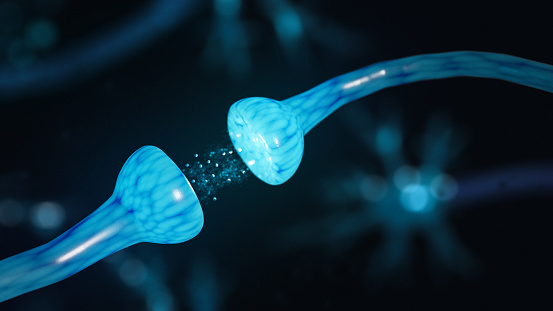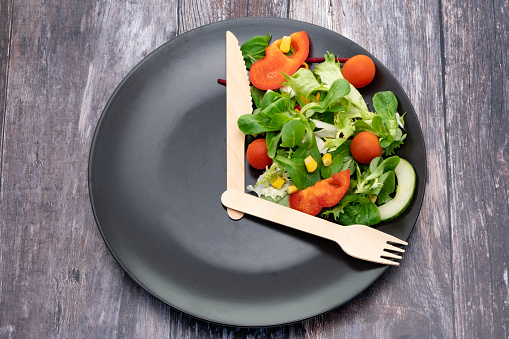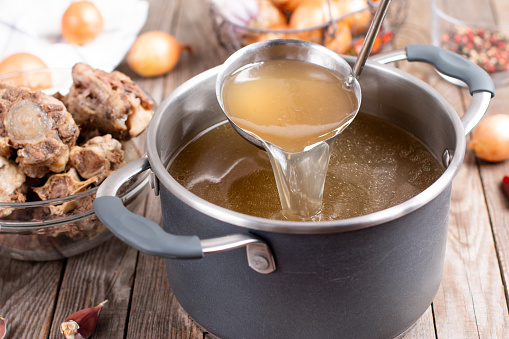The ketogenic diet can be a powerful way to lose some extra body fat. A lot of people are confused thinking “how is eating fat going to help me lose fat?” Well, we're gonna debunk that myth and then I'm going to give you three ways to practice keto the right way for weight loss and fat loss. I'm also going to show you how to do it the wrong way which can actually lead to weight gain. So let's get all into it.
Hey, Keto Kamper, Ben Azadi, here best selling author of four books, the founder of Keto Kamp, and here at keto camp we’re on a mission to educate and to inspire 1 billion people.
In this 10 part keto series we have documented how to do keto the right way, the right foods to eat, what are the right markers for ketosis, and so much more. This article is focusing on weight loss with keto. I'm going to outline for you three ways to burn fat and keep it off for good when you follow these three steps.
So without further ado, let's get right into this. First thing we need to understand is that we don't lose weight to get healthy. This is where a lot of educators and doctors and nutritionists get it wrong. The fact is, we get healthy to lose weight. I'm gonna say that again, so I really hope you understand this, as Dr. Berg says all the time and you know what, he's right. We don't lose weight to get healthy. We get healthy to lose weight.
So the question is, how do we get healthy? How do we use ketosis to get healthy? Well, it starts at the cellular level. Inside the body, we have 70 to 100 trillion cells. Inside each cell there is a DNA nucleus, yes, the genes you were born with that you cannot change, but you can change the expression of those genes. We have our little mitochondria, which is the engine of your cells, if you will, that produce ATP. Now, I’m going to relate this to fat loss.
We have at least eight fat burning hormones that we know of. I want to list three right here which is the thyroid, T3, the active form of thyroid, every cell has a receptor for the thyroid hormone, testosterone, human growth hormone, and other fat burning hormones.
But here's how weight loss works. Here's how your hormones which is the language of the human body works inside your body. Every cell has a lipid bilayer which is called the cell membrane. It's made up of, guess what, protein, saturated fat and cholesterol. Yes, you are made of fat. Your body loves fat, the right fat which we'll talk about later. Not carbohydrates.
In fact, less than 1% of the total body is made up of carbohydrates. So, on your cell membrane are your cell receptor sites. There can be around 30,000 of these receptor sites on one cell. Think of them as cell phone antennas, that are just receiving signals. What are they receiving signals from? From your hormones, your nutrients, your oxygen.
Now, relating this to your fat burning hormone, when you are in ketosis, doing it the right way, the way that I'm going to teach you here, your fat burning hormones send signals to your cells. The message is being heard, the mitochondria burns fat, you lose weight as a side effect and you produce energy so you feel good and you have high energy levels. That's the way you were designed to be. When you are not functioning this way. There is one reason for it and there's one word for it and that word is inflammation.
I know you've heard of inflammation from a sore shoulder from a CrossFit workout or a sprained ankle from basketball, that is inflammation, but what I'm referring to is cell membrane inflammation. When there's cell membrane inflammation, guess what? Now, your fat burning hormones cannot get into your cells and you're not going to feel well, you're not going to burn fat. So what we want to do is we want to use keto. I'm going to teach you three ways to use keto to down-regulate cell membrane inflammation and as a side effect, lose weight and you have more energy as a side effect. You get the results you want and guess what? They stick around. long term.
This is not yo yo weight loss, fad dieting here, this is true cellular health. Therefore stop focusing on weight loss and start focusing on cell membrane inflammation. And hey, when it comes to hormones, there's only one fat storage hormone in the body and that is insulin.
Here's a simple rule for you to understand - high insulin, fat storage, low insulin fat burning. So which foods cause the most insulin and glucose spike in the body? Carbohydrates and eating frequently. A ketogenic diet of rich in healthy fats barely touches the dial on insulin.
Insulin is the bully of the block. When you activate insulin, all of a sudden your fat burning hormones, they've scattered they're gone. They cannot coexist. Insulin is that bully and you activate it with carbohydrates. Therefore when you eat fat like you do on keto, you're keeping insulin low and you're in a fat burning state. Think of it this way. When you eat carbohydrates, your body raises glucose inside your body. It's a very tightly regulated system that wants to keep glucose low in the bloodstream, about one to two teaspoons in the body is considered normal. And when you eat carbohydrates, you have more than that. So the body calls the insulin troops to take the glucose out of the bloodstream, put it into your cells and store fat.
When you're eating keto. You don't have this problem. You're keeping insulin low and you're burning your own body fat and producing ketones. That's what we want to do here and that's what you're going to achieve. So let's get into these three ways to use keto the right way. So you could burn fat on keto, and keep it off for good.
Number one way is to understand clean keto versus dirty keto. Not all fats are created equal. You could be eating ketogenic fats, they might get you in ketosis, yet they're eliciting a strong inflammatory response. Remember, I showed you the cells and the inflammation around your cells. This can happen with bad unstable rancid fats on keto and a lot of people who do keto eat these fats, not knowing that they're creating a lot of inflammation in their body and they're wondering why they're not getting the results they want, on keto.
So what are these bad fats? It's the vegetable oils. It's the canola oil, corn oil, the grapeseed oil, the cottonseed oil, the soybean oils. Stay away from these vegetable oils. There was a study that showed these vegetable oils create 132 days of cell membrane inflammation. I've interviewed Dr. Kate Shanahan and Professor Peskin from MIT. And they all say that these vegetable oils are worse than smoking cigarettes. They create massive amounts of inflammation in your body, so let's stay away from that.
We also have things like the artificial sweeteners like sucralose and aspartame, which could create gut dysbiosis. Stay away from that on keto and stay away from the trans fats, the margarines. Those are bad fats. You want to get rid of them from your ketogenic diet and switch over to clean keto foods. Stable fats that help your cell membrane and allow these hormones to attach and burn fat - from sources like grass fed beef, grass fed lamb, pastured eggs, organic free range chicken, bison, nuts and seeds.
I have videos on my channel with lists and lists of healthy keto foods. But this is just a small sample for you to understand that healthy fats clean keto is key. Let's not be one of those keto bros that goes to McDonald's and grabs the Big Mac, asks for it without the bun and say hashtag we're keto. No, that might be keto, but that is not healthy. And that's not what we teach here at Keto Kamp.
The second tip for you to accelerate fat loss with keto is to add intermittent fasting to your ketogenic diet. Intermittent fasting and ketosis go hand in hand because they both do a great job at keeping insulin low. The way I teach it inside of the Keto camp Academy is to get fat adapted first with keto, get into ketosis, and then pair intermittent fasting.
Here's the analogy that I got from my colleague, Dr. Jason Fung. When you are eating carbohydrates and eating foods that stimulate glucose in the bloodstream, you're storing that as sugar reserves called glycogen stores. We could store about 2000 calories of these sugar reserves. So think of them as just strings of sugars, that your body's stores and packs away in your muscle and liver cells.
You can also think of it as the wallet in your pocket, which is very easy to get cash in and out of - that’s equivalent to your glycogen reserves. Very easy to put sugar in and take sugar out, very easy access, that's the benefit. The drawback is that there are limited reserves in your wallet, you can only put so much cash before it's packed, and then you need more wallets. Well, the body can only store about 2000 calories of the sugar reserves. And then you store body fat in excess. Not good.
So with adding fasting into the mix, you teach your body to start burning its own body fat stores. You teach the body to switch over and burn through that wallet, if you will, burn through your glycogen stores and start burning your own body fat. So I compare body fat your body fat stores on your body right now to the bank safe you have down the street. It's a longer process to get to that bank, but once you have access to the bank safe, there's almost unlimited reserves there and you could go days and - somebody has fasted over a year by the way, just burning your own body fat.
So we have an option here doing keto, we can get our keto calories from the plate of food in front of us, or we could get it from our butt our hips and our thighs, you choose.
So here's a great intermittent fasting schedule for you to follow on keto to get amazing fat loss results. It's called the 18-6 schedule. This is great for you to do on a daily basis and how it works is 18 hours out of the day, you are in a fasted state. You're just having some water, some sea salt, you're letting your body get its own calories from your body fat. Your liver is producing ketones and you're feeling good. You should feel like a rockstar if you've done this the right way. So your body's burning body fat throughout those 18 hours. Then six hours out of the day you have your eating window. Let's call it a feasting window, feast it up with ketogenic rich meals. Have two meals within those six hours. For example, 12pm you break you're fast and then you finish your second meal at 6pm. So 12 to 6pm eating window and then outside of that fasting window. If you follow that 18-6 schedule with your ketogenic approach, watch the fat just melt off.
Before I get into the third and final tip here. I have a quick question for you which is the question of the day. Do you currently practice intermittent fasting with your ketogenic lifestyle? And if you do, what is your go to schedule? Put a comment down below and let me know.
The third tip here is this when you break your fast break it the right way. We do not want to break our intermittent fast by combining carbohydrates and fat even if it's some carbs and fat because here's what happens when you break your fast. Your hormones are very sensitive. Insulin is very sensitive. This is good. We want sensitive hormones, but when you break the fast with some carbohydrates, you're going to spike glucose your body will do a great job at grabbing the glucose out of the bloodstream and taking it to your cells, unlocking the cell doors and driving the glucose into your cells.
Amazing. However, when you have fat with that carb meal, the fat goes along for the ride and it can actually slow down fat burning and maybe even cause weight gain. So don't break your fast with the combination of fat and carbs. Instead break your fast the right way and that's going to be with mostly protein and some fat. What would be an example of that? Well, I love bone broth, I personally don't make my own bone broth but hey, if you do, more power to you. Make your own bone broth. Not only is bone broth loaded and things like collagen and specific amino acids which really helped the body but it's also mostly protein and some fat which is the ideal meal for breaking your fast
My go-to for bone broth is with my friends over at Kettle & Fire. Click here to purchase their bone broth; we have an exclusive 15% off code with Kettle & Fire or you, use Keto Kamp at check out.
Another option for you to break your fast the right way is going to be with some eggs and some avocados and maybe some green leafy vegetables. That's mostly fat, mostly protein too, thumbs up. One more example, for you to break your fast the right way, it's going to be a fatty keto smoothie with some coconut milk, some collagen protein powder, some nut butters in there and maybe some ice blended all together. That's also a great way to break your fast. When you break your fast that way you're going to continue your fat loss efforts.
So those are your three tips for you to get amazing weight loss results on keto. Now what if you're doing all these things but you've hit a thought you hit a plateau? It turns out there's five reasons why I have seen people hit a Keto plateau and I have outlined all five of them. In the next article, and then five solutions for you to overcome that keto stall. So click that article right here and learn the five ways for overcoming a Keto plateau.
If you'd like to see the video version of this article, click the play button below.





